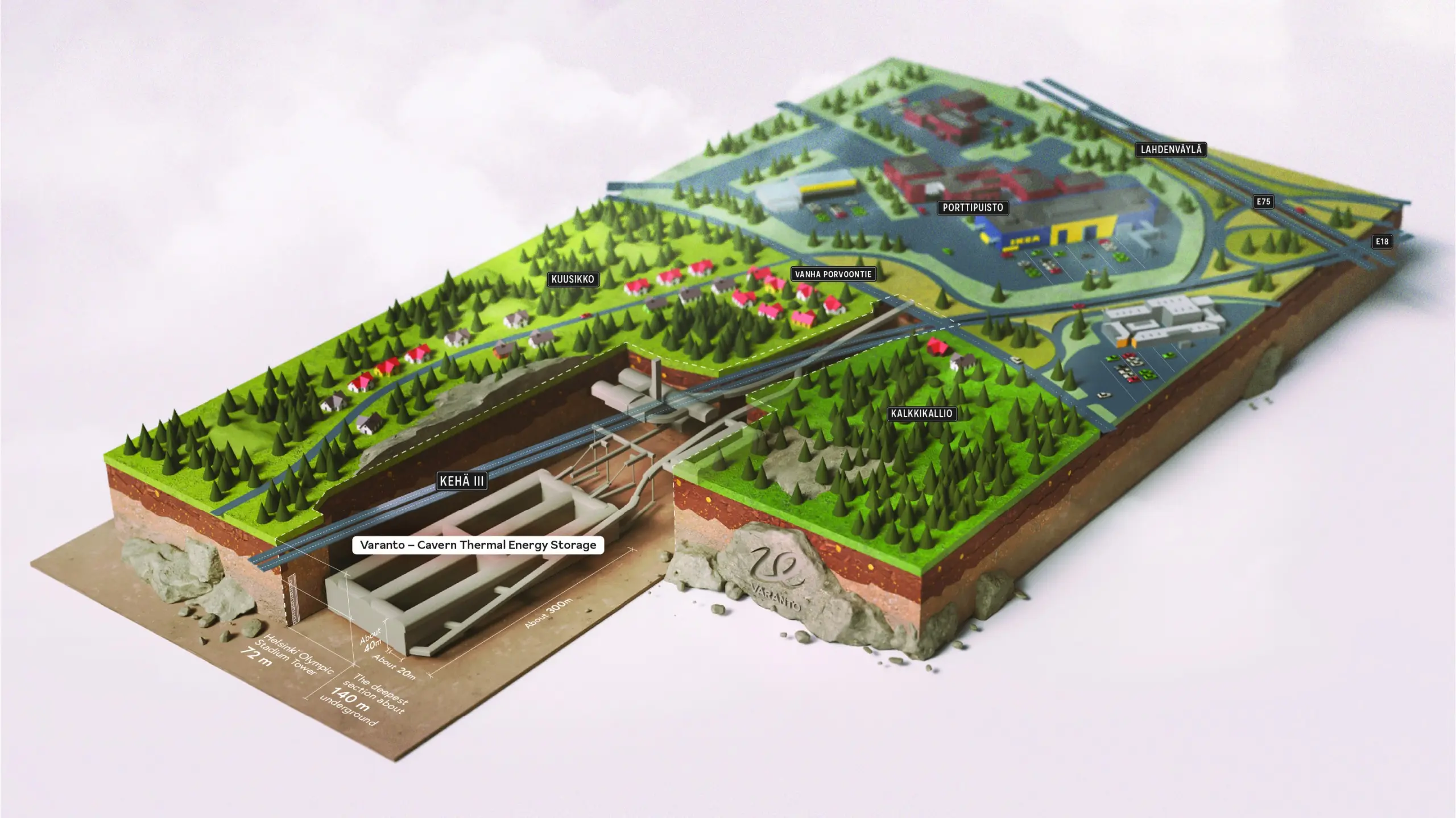- cross-posted to:
- climate@slrpnk.net
- collapse
- cross-posted to:
- climate@slrpnk.net
- collapse
A seasonal thermal energy storage will be built in Vantaa, which is Finland’s fourth largest city neighboring the capital of Helsinki.
The total thermal capacity of the fully charged seasonal thermal energy storage is 90 gigawatt-hours. This capacity could heat a medium-sized Finnish city for as long as a year. Broken down into smaller energy units, this amount of energy is equivalent to, for example, 1.3 million electric car batteries.
The project cost is estimated to be around 200 million euros, and it has already been awarded a 19-million-euro investment grant from Finland’s Ministry of Economic Affairs and Employment. Construction of the storage facility’s entrance is expected to start in summer 2024. The seasonal thermal energy storage facility could be operational in 2028.



Because there is no “simply store” yet. Efficiently storing energy is not really solved. There are lots of snake-oil companies with braindead ideas (like lifting blocks of concrete to build a tower). But heating water and storing it like this seems like a feasible option. Very cool but expensive… I do hope it works.
Artificial lakes / Pumped-storage hydroelectricity sounds a lot more reasonable than heating water. And it already exists
The problem with pumping is low energy density, especiall when compared to deating water. Heating 1 kg of water by 1°C requires 4186 joules of energy. So to store the same energy by “lifting” water, it would require 4186 j / (1 kg * 9.81 m/s^2) = 426 m of height difference. This value seems unbelievable, but I have triple checked it. And that is only 1 degree of difference, 50 degrees difference would equal 27 km of height difference.
Yes. The problem is that the best locations for harvesting wind energy are flat and the best places to pump store energy ideally needs some terraine
The problem with heating water is, afaik, that its not that easy to convert it back into electricity.
But based on this article it seems like they just store heat and reuse it as heat when needed.
It sounds plausible to simply convert excess electricity to heat and simply use it with heat is needed
It’s not easy but we are trying!
https://cordis.europa.eu/article/id/205499-highefficiency-engine-turns-waste-hot-water-into-electricity
That’s cool as hell.
Unless you heat it to about 400°C like in every steam-electric thermal power station. To store such temperatures, it’s better to melt metal or something.
They recently built a pilot plant that seems to go way beyond the prototype stage at 100 MWh. This technology obviously still has a long way to go to mainstream adoption, but just writing it off because it seems farfetched is pretty shortsighted.
Well, I’m still sceptic and the marketing driven website low in details doesn’t really help. Most of these projects conveniently forget the whole supply chain for the needed resources. But if it works, then great! The more solutions we have the more chance we have as humanity to survive.
Well, they’re building the thing. Then they’ll be running the thing for a while. Then we’ll see if it really works technically and economically.
I wouldnt really call being able to sub in for 10 wind turbines for 4 hours “way beyond the prototype stage”. Especially given its losing 1 in 5 joules generated and require a fuckload of concrete to construct.